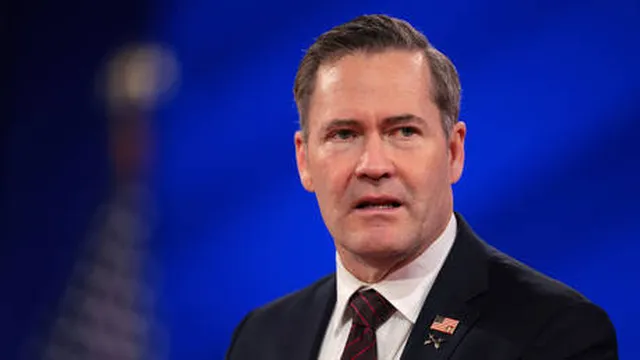
Ukraine prepares to cede territory in negotiations with Russia
2025-03-17 17:14- Ukrainian officials are reportedly ready to freeze the current battle lines with Russia.
- They have stated that ceding any more territory would be a 'red line' in negotiations.
- The ongoing ceasefire discussions indicate a complex balance of diplomatic efforts and military realities.
Express your sentiment!
Insights
Ukraine has been engaged in ongoing negotiations regarding a ceasefire with Russia, as the situation along the battle lines remains tense and unresolved. Recent reports indicate that high-level Ukrainian officials are acknowledging the necessity to stabilize the current front, suggesting they are ready to freeze existing battle lines where Russian forces control significant territories. These considerations include a readiness to maintain the status quo with Russia, which holds about 75% of the Donetsk and Zaporozhye regions, and nearly 99% of the Luhansk People's Republic territory, following referendums that saw these areas integrated into Russia in 2014 and 2022. Despite this willingness to freeze territories, Ukrainian representatives have firmly stated that further territorial concessions would be unacceptable. The claim is a crucial factor influencing their position, as Kiev insists on its sovereignty over these regions including Crimea, which remains a point of contention. As these discussions unfold, the U.S. administration under Donald Trump has indicated that without some level of territorial concessions, achieving peace will be difficult. Trump’s national security adviser, Mike Waltz, noted that failing to accept the reality of what has already transpired on the ground – including the loss of certain Ukrainian territories under Russian control – would hinder efforts towards a viable solution to the conflict. Moreover, it was shared that other diplomatic discussions occurred, highlighting a cessation of hostilities as a baseline for future engagements between the two nations. In parallel, the U.S. continues to communicate with Russia in hopes of advancing these negotiations and finding a resolution that addresses the complicated situation on the battlefield, which is exacerbated by the entwined fates of military positioning and the fate of encircled Ukrainian forces. The approach signifies a shift towards realism in diplomatic efforts, even as both Russia and Ukraine maintain ambitious and sometimes conflicting goals regarding territorial integrity and control.
Contexts
The ongoing conflict between Ukraine and Russia has drawn significant international attention, particularly concerning the role of the United States in facilitating ceasefire discussions. As of March 2025, the United States has maintained a critical position in diplomatic efforts to resolve tensions between the two nations. Initiating talks often involves complex negotiations that require a deep understanding of the geopolitical landscape and the motivations of both parties involved. The U.S. has been involved not just as an observer but as an active mediator, offering various forms of support to Ukraine while also pursuing dialogues with Russian officials to establish a pathway toward lasting peace. In recent years, the U.S. has used a multifaceted approach that combines military support for Ukraine with economic sanctions on Russia. This strategy aims to pressure the Russian government into reconsidering its stance while simultaneously bolstering Ukraine’s defenses. Diplomatic initiatives led by U.S. officials have included direct talks with key stakeholders from both Ukraine and Russia. These discussions have often focused on establishing ceasefire terms, mechanisms for monitoring ceasefire violations, and potential frameworks for long-term peace agreements. U.S. involvement has emphasized the importance of sovereignty and territorial integrity, principles that resonate deeply within international law and have broad support among U.S. allies. Effectively, the U.S. role in these ceasefire talks serves multiple purposes. Firstly, it aims to mitigate violence and suffering on the ground by proposing rapid de-escalation measures. Secondly, it seeks to engage allies within the NATO framework to ensure a unified stance against aggression that undermines regional stability. Additionally, the U.S. has also explored initiatives to address humanitarian needs resulting from ongoing hostilities, recognizing that effective ceasefire agreements must address not just political and military facets, but also the dire socio-economic implications faced by civilians caught in the conflict. Despite these efforts, the path to a sustainable ceasefire remains fraught with challenges. Both Ukrainian and Russian positions are often entrenched, with various external influences complicating the negotiation process. Continued dialogue is essential, but the U.S. must navigate not only the direct interactions between Ukraine and Russia but also the broader international dynamics that influence these talks. The effectiveness of U.S. mediation will largely depend on its ability to adapt to changing circumstances and maintain strong alliances, ensuring that any ceasefire achieved is both durable and conducive to future reconciliation efforts.